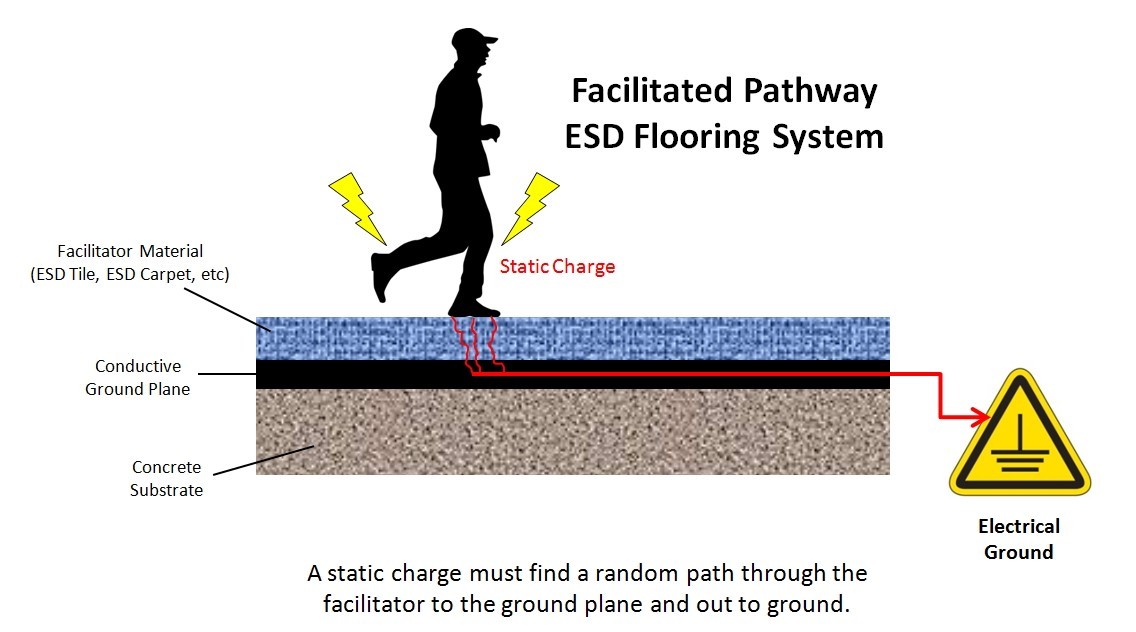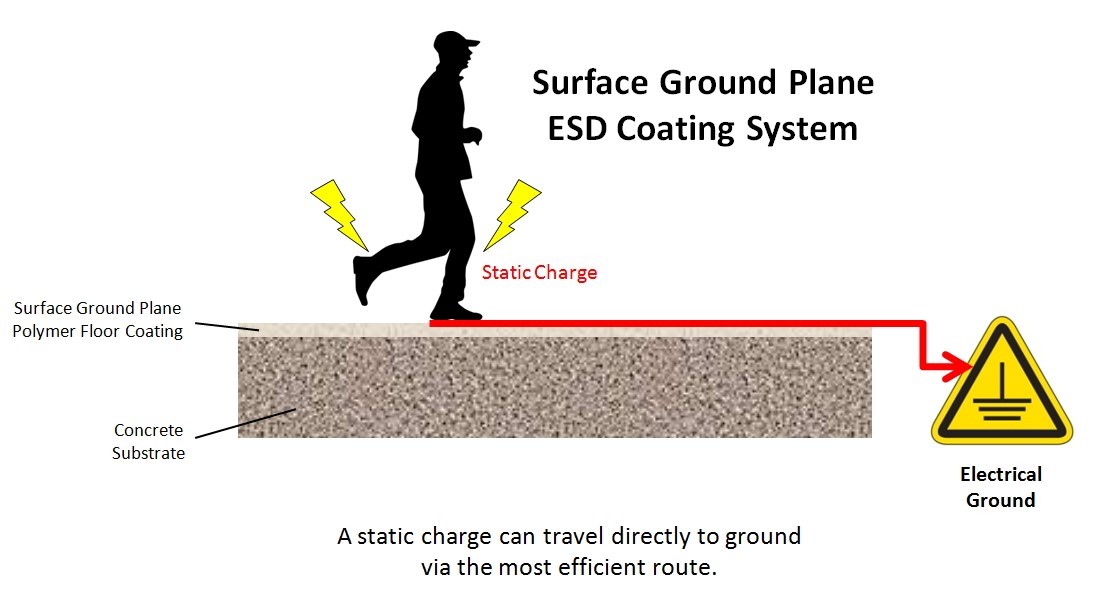ESD floors can be created using a variety of materials ranging from Carpet, Rubber and Tile to Polymer coating such as epoxy or urethane. The “best” esd floor design ideas are up to the user based on the performance expectations, both physical and electrical, of the Electrostatic Protected Area (EPA) being created. Although these floors are all very different, they all carry a charge to ground through a conductive ground plane like static control flooring.
A conductive ground plane is a continuous or monolithic layer that is completely conductive and spans the entire surface of the flooring area. This layer makes contact, at multiple points, with a known or confirmed electrical ground. These ground contact points may consist of thin copper foil tape, grounding rods, grounding bars or a combination of these1. When a charge is introduced to this conductive plane, it is carried along the plane and discharged safely to a ground. Static control flooring is an important thing to consider in your facility to ensure safety.
Static charges generated from moving personnel, carts or chairs are introduced to the electrical ground plane via two methods:
- Facilitated Pathway: Examples of facilitated pathways would include ESD carpet squares, or ESD tile placed over conductive adhesive, or polymer coatings placed over conductive primers. Here, the static charge must contact a conductive point, or points, on the surface and be transferred through the surface to the underlying ground plane where it is then carried away to ground. The use of a facilitated ESD system is less efficient but still common in the market.

- Direct Contact: An example of direct contact would be a ‘Surface Ground Plane’ ESD polymer coating. This is the most efficient transfer method simply because the entire topcoating acts as its own ground plane. Here, a static charge immediately flows to the electrical ground without contacting individual points and travelling through conductive materials or facilitators.
ESD footwear, drag straps/chains and conductive wheels are the connectors that allow the static energy that has built up related to movement to transfer to the floor. As might be expected, the quality of these devices and the amount of surface contact they make have an impact on how quickly and efficiently the static energy is transferred. The location of the ground plane also makes a major difference in overall ESD-control performance and the static control flooring. Essentially, the further from the surface a ground plane is placed, the slower and less consistently this transfer of static energy will happen. Consequently, the more critical the EPA, the more beneficial a Surface Ground Plane becomes.
Want to learn more about Surface Ground Plane ESD flooring systems?
Download our latest whitepaper entitled “Surface Ground Plane ESD Floors – The Best Way to Protect ESD-Sensitive Components”
1Note: It is important to match the type of ground to the performance requirements of the Electrostatic Protected Area. Creating a balanced and equal ground (equipotential) is always preferred but can be critical in certain situations.
- Aesthetics: The Art and Science of Decorative Flooring - August 28, 2025
- Why Epoxy Mortar Outperforms Traditional Concrete in Industrial Applications - August 27, 2025
- How Antimicrobial Flooring Supports Health and Safety in Critical Environments - August 22, 2025



